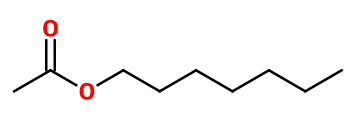
Photo credits: ScenTree SAS
Do you sell any of the raw materials? Would you like to let our users know?
Send an email to fournisseurs@scentree.coto learn about our advertising opportunities.
Do you sell any of the raw materials? Would you like to let our users know?
Send an email to fournisseurs@scentree.coto learn about our advertising opportunities.
General Presentation
-
CAS N° : 112-06-1
-
EINECS number : 203-932-8
-
FEMA number : 2547
-
Density : 0,886
-
Optical rotation : Donnée indisponible
-
Allergens : This ingredient does not contain any allergen.
-
Refractive Index @20°C : Donnée indisponible
-
Volatility : Head
-
Price Range : €€
-
Appearance : Colorless liquid
-
FLAVIS number : 09.022
-
JECFA number : 129
Information on synthetic ingredients
-
Acid Value : Donnée indisponible
-
Boiling Point : 193°C
-
Detection Threshold : 320 ppb (0,000032%)
-
Molecular formula : C9H18O2
-
Log P : Donnée indisponible.
-
Molecular Weight : 158,24 g/mol
-
Fusion Point : -50°C
-
Flash Point : 68°C
-
Vapor pressure : Donnée indisponible
Uses
Other comments :
In comparision to Hexyl acetate, Heptyl acetate has a more rosy and metallic facet, and is less juicy.
Stability :
acetates may form acetic acid through time
Uses in perfumery :
Heptyl acetate is used in fruity notes of pear and juicy fruit and in rose notes to bring a fruity and sweet note.
Year of discovery :
Data not available.
Isomerism :
Heptyl acetate does not have any isomer used in perfumery.
Synthesis precursor :
Heptyl acetate is not a precursor to the synthesis of another compound of olfactory interest.
Natural availability :
Heptyl acetate is present in several plants and can be extracted from Ginger EO. Synthetic Heptyl acetate remains the most used in perfumery.
Synthesis route :
Heptyl acetate is obtained in synthesis by an esterification reaction between acetic acid or acetic anhydride with Heptanol, in the presence of an acid catalyst such as concentrated sulfuric acid.
Regulations & IFRA
This ingredient is not restricted

